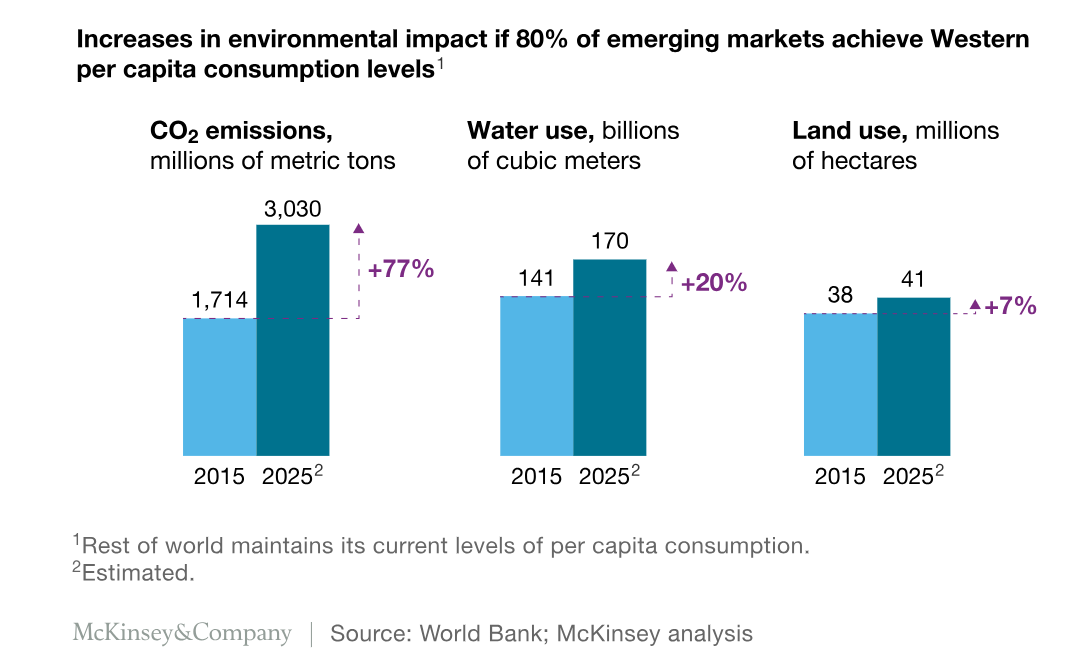I dare you to pause a moment the next time you go shopping and ask yourself: Where does the clothing I buy come from? Unfortunately, for most people, this question does not go through their minds at all. Nowadays, our society is driven by capitalism, and this is perfectly represented in the fast fashion industry.
Why worry about where things come from when there is a huge sale, just pay and enjoy. We all want to look stylish, and chic and we dress-to-impress. Even if you don’t care about fashion, it’s important, it’s a form of expression. It is a huge part of our culture. In a world where shopping is merely a click away, the apparel industry has succeeded in solidifying the notion that fashion is disposable.
The fear of being observed in the same outfit on more than one occasion becomes a form of ridicule. As per a recent study, people are purchasing 60% more clothes than they were twenty years ago, but they are only keeping each item for half that amount of time. Fast fashion has gained popularity by democratizing high fashion, which they achieve by mass-producing knockoffs of designer labels.
These stores operate at a far rapid pace than their conventional peers. As a result, they cut manufacturing process and provide designs that are fresh as well as affordable.
As the first fast fashion retailer, Zara, a Spanish store, rose to fame in the 1990s by releasing hundreds of designs every week. They developed the fast fashion business concept from the ground up and revolutionized the industry. Zara’s success inspired others in the industry and H&M, Uniqlo, Forever21 and many others followed suit.
These fashion houses release 52 micro seasons in a year instead of conventional two. The Chinese ultrafast fashion retailer Shien releases 10000 new designs every day. It is affecting the rest of the industry. Gap, J. Crew, Hollister, Ralph Lauren, Burberry, and Hilfiger have all said want to speed up supply chains to emulate fast fashion. All this churn is coming at a huge cost. This ‘see-now-buy now’ model takes an exorbitant toll on society, environment, and the industry itself.
Following numbers will assist in comprehending the extent of exploitation of natural wealth:
- Fast fashion apparel accounts for around 10% of the global greenhouse gas (GHG) emissions. (Source: United Nations Environment Programme, UNEP)
- The annual total of GHG emissions from textile manufacturing is 2 billion tons, which is greater than the combined emissions from worldwide travel and maritime vessels.
- Textile sector emitted 1 billion mt of GHG in 2018, which is equal to the combined emissions of France, UK & Germany. (Source: McKinsey)
- Clothing composed of synthetics is the root cause of 35% of the plastic microfibers found in the seawater. These microplastics act as a poisonous material that damages the aquatic ecology if they eventually decompose in the ocean.
- Approx 85% of all textiles wind up in the trash. Eventually, 57% of this ends up in a landfill.
- The whole assembly of one pair of jeans demands 3,781 gallons of water and releases about 4 kg of carbon equivalent during production. Industry utilizes over 93 billion cubic meters of water annually through such processes.
- 30% of the garment donations in developed nations wind up in either landfills or in incinerators in developing economies. (Source: Hot or Cool)
- 100 billion new articles are produced every year (source: Clean Clothes Campaign)
- Fewer than 1% of the fabrics used to make apparel are recycled and repurposed to create fresh articles. (Source: UNEP)
- 20 times more emissions are produced by the fashion choices made by the richest 20% of the world’s population on average than by the poorest 20%. (Source: Hot or Cool)
- Polyester, nylon, spandex use almost 342 million barrels of oil a year.
- Ancient or endangered woods comprise about 33% of the viscose used in garments, and the extraction process demands enormous volumes of waste. The wood is pulped and turned into viscose and rayon textiles but only about 30%. The remaining 70% of the wood that is harvested is burned or disposed of. The hazardous chemicals used in the fabric manufacturing process, dying, and finishing, are dumped in rivers close to villages.
- It is projected that the fast fashion industry will be worth roughly 185 billion US dollars worldwide by 2027.
- The fashion industry accounts for 79 trillion liters of water consumption on an annual basis. (Source: Pulse Fashion Industry report by the Global Fashion Agenda 2017)
- An article about the poor working conditions in H&M’s supply chain went viral in 2017, leading the company’s 8% growth in sales to shrink to 4%, the slowest imports in H&M’s 44 years of business.
- Roughly 40% of fashion workers face low salaries, rigid working conditions, and are confronted with the threat of being dismissed.
- One of the most known cases of fast fashion accidents is the Rana Plaza factory collapse, which killed over 1100 people and injured 2000 in Bangladesh.
- Despite strong global sales growth, emerging nations have had particularly significant increases in apparel sales because of an increase in the number of middle-class citizens in these regions. Sales of clothes increased 8 times more quickly in 5 major emerging nations: Brazil, China, India, Mexico, and Russia than in Canada, Germany, the UK, or the US.

Greenwashing
The sector pledges to create sustainable clothes to address these issues and become environmentally friendly. However, the fast-fashion industry’s operating model is incompatible with sustainability. Neoliberal capitalist economies are antithesis with sustainability because they define success by growth and constant demand. Zara has unveiled a commitment to sustainability.
Being the biggest fast-fashion shop globally, they generate over 450 million clothes annually and introduce 500 fresh designs every week, totaling 20,000 pieces annually. The fast fashion industry is expected to grow by 63% in the next ten years. Furthermore, fewer than 1% of clothing made worldwide is recycled. With these kinds of numbers, how is it possible for a fast-fashion retailer to promote sustainability?
Recycling is one of the concepts that fast-fashion retailers have rolled out. However, even if clothes are gathered in-store, there are no facilities capable of recycling clothes on the scale required to meet present production rates. Additionally, recycling usually requires more energy than producing fresh items. The term “100% sustainable fabric” is meaningless. The production of fabrics (any fabric) consumes a significant quantity of natural resources and energy.
Retailers and corporate brands publish data on how much less of an impact their supply chains have on the environment. Corporate social responsibility (CSR) reports are voluntary and not independently evaluated, in contrast to annual financial reports. Furthermore, they don’t use a standardized or consistent method to gauge their progress. Consequently, customers are unable to compare businesses without performing complex math.
Most of the green claims are baseless. Words like Eco-friendly, ethical, responsibly made, Sustainable have no legal definition hence no accountability. A prevalent misinterpretation of the word “sustainability” is probably one of the things preventing customers from making smart decisions.
When assessing fashion brands and products, consumers most often bank on brand websites and product tags. However, a consumer’s capacity to make simple, informed decisions is hampered by the confusing range of sustainability elements, accreditations, and assertions that these sources frequently provide.
There is no consensus among shoppers (or brands) over what constitutes “sustainability,” which aspects are most important, or where to go for details regarding a specific brand’s commitment to sustainability. Finding unbiased sources that can assist in differentiating between genuine commitment towards environment and greenwashing can be quite challenging.
Solutions
To facilitate the shift from fast, disposable fashion toward conscious and durable fashion, systems are needed that help boosting conscious consumer behaviours. Lawmakers, fashion companies, retailers, and tomorrow’s fashion designers all have a part to play in slowing down today’s fast fashion industry, ultimately minimizing humanity’s contribution to the plastic planet we are contributing to.
Businesses can generate income without producing new clothing by using circular business models that maintain things in use, such as renting, reselling, repairing, and remaking. These models also give a chance for the fashion sector to flourish in new and better ways.
One way clothing stores are bracing the adversities of sustainability is by revamping their C-suites. Nearly 25 of the major fashion firms in Europe have at least one CEO with experience in environmental, social, and governance policies in the C-suite, as per McKinsey’s State of Fashion 2024 report. These CEOs oversee a variety of sustainability projects, including reducing waste, improving employee relations, and minimising carbon footprints.
France introduced a law in 2023 mandating that every clothes sold in the nation bear a label outlining the exact impact it has on the climate. The EU is projected to do same.
To reverse the disposable fashion market, raise awareness, and support consumers in their conscious decision-making, one small step could be to offer repair or tailoring services. The emotional worth of clothing is increased when it is tailored to provide an impeccable fit. Repair can extend the life of a garment.

This article is not to discourage you from buying clothes. However, we must pay attention to what we buy and how much. The mass market is full of attractive pictures of popular brands, where you can easily find the latest models of clothing that appeal to you with incredible discounts.
However, few people think about what the consequences of this shopping are. Irresponsible consumer behaviour promotes the accelerated growth of the fashion sector and wallet friendly products at the expense of human health. We do not have the right to exploit natural wealth solely for a fashionable life. So next time you go shopping ask yourself: Do I really need this?











